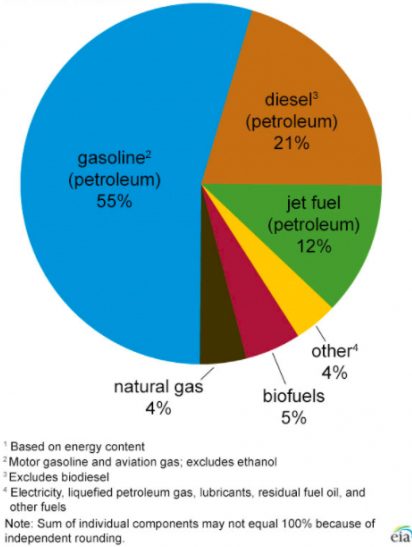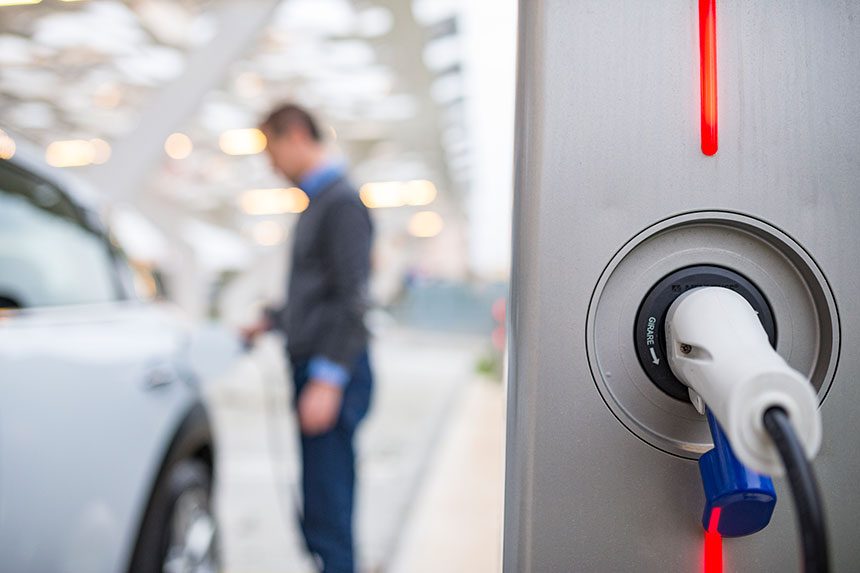“It’s tempting to think that not too far into the future all the vehicles will be electric, but we have no idea and there’s a very long way from there,” John Heywood, Professor of Mechanical Engineering at the Massachusetts Institute of Technology (MIT), pointed out in somewhat enigmatic fashion at the start of our interview. This whole issue is certainly arousing great interest.
According to a report from Reuters, automotive manufacturers have invested a total of at least $90 billion in these vehicles to date. PSA Peugeot Citroën SA, Toyota, BMW, Daimler, GM, Volvo, Nissan, Porsche, Ford, Renault, Volkswagen – to name but a few – have all added a number of new electric vehicle models to their product range and have set themselves
$90 billion already invested in evs by automotive manufacturers
A basically more environmentally-friendly means of transport
“Driving around cities is clean but you need to generate electricity and you need to do it in a clean way,” underlines John Heywood. So, “if you drive an electric vehicle in West Virginia, it won’t be any greener than a hybrid in California,” points out Scott Moura, Assistant Professor of Energy, Civil Infrastructure and Climate Systems at the University of California, Berkeley.U.S transportation energy sources / fuels, 20161

A further significant reduction in this percentage would certainly have a positive effect on the planet. Electric vehicles have the additional advantage over internal combustion engine-driven vehicles of helping to improve local air quality, since they don’t produce exhaust gases. So a number of countries that have decided to support electric-powered road transport, both from the regulatory and fiscal point of view, have been prompted to do so – at least in part – by their environmental conscience. Government incentives have turned China into the biggest market for electric vehicles in the world. In fact Beijing envisages outlawing the sale of petrol and diesel cars – though the timescale has not been announced – following the example of France and the United Kingdom, where sales of both petrol- and diesel-engine cars are to be banned from 2040. The Indian authorities have shown even more daring, announcing that they will allow nothing but electric vehicles to be sold from 2030.
Auto and battery manufacturers in India have been gearing up for the new era, announcing investment plans and partnerships, while the government has been working on the necessary infrastructure, for instance installing charging stations in railway station car parks.
Today close to a quarter of all CO2 emissions worldwide can be attributed to the transport sector.
A green Vehicle. On the right rack but still with a long way to go…
“The transition towards electric vehicles is underway, but we still don’t know whether we’ll end up with 30% or 40% clean-energy cars, or actually 80%. I have some doubts about this number”, says Professor Heywood, and he has good reason to be sceptical. While EVs appear to be on track towards becoming a must, there are still many hurdles to surmount.The transition towards electric vehicles is underway, but we still don’t know whether we’ll end up with 30% or 40% clean-energy cars, or actually 80%. I have some doubts about this number.
John Heywood, Professor of Mechanical Engineering at MIT
Running EVs does, however, cost less than a petrol or diesel car. According to a recent report from researchers at the University of Michigan Transportation Research Institute, the average cost of running an electric vehicle in the United States works out at $485 a year, compared with $1,117 for a gasoline-powered vehicle. Nevertheless, EVs owners may have to invest in recharging infrastructure. John Heywood points out: “If you decide to buy an electric car, you’ll need to buy a home recharger and that can be expensive. This also raises the question of what a home is. Today it’s a house with a garage and a driveway. But then how many people actually own this kind of home? A lot of people still park in the street.”
Scott Moura acknowledges that “if you use a regular wall outlet to charge up your car, you won’t need any other installation, it’ll just increase your electricity bill,” but stresses: “Still, you’ll need ten hours to fully recharge your car – which won’t be a problem if you’re at home all night. But it’s not as convenient as simply filling up the tank. Even if you buy a special charger, it won’t charge up nearly as quickly.”
The cost of batteries has come down substantially (…), but it still needs to come down further.

Recharging stations are essential
Unlike service stations, which are to be found on practically every street corner, most US states have relatively few electric recharging stations. However, there are a few more in California than elsewhere. “Following the Volkswagen emissions scandal, California used the money paid in compensation to deploy EV charger infrastructure across the state,” Scott Moura reveals. The UC Berkeley assistant professor is delighted to see the Golden State leading the line in the United States, with 4 – 5% of the total number of vehicles sold being EVs. However, the Silicon Valley state still has to subsidise these cars – offering a ‘clean vehicle rebate’ of up to $2,500 per vehicle, plus $7,500 worth of Federal Tax Credit – in order to encourage consumers to buy them.Meanwhile, Europe is still ahead when it comes to electric vehicles. All European countries are following the same recipe with a view to increasing the number of EVs in circulation. Moreover, underlines John Heywood: “Many have excess electricity to resell. The fact that in the United States gasoline costs less and journey distances are longer tells its own story.” The driving range of electric cars, which does not always come up to driver expectations, may also be a stumbling block to EVs gaining ground. “At least at a psychological level, this calls for some organisation to ensure that the vehicle is properly charged up, though the actual range is generally sufficient,” argues Scott Moura.
Following the Volkswagen emissions scandal, California used the money paid in compensation to deploy EV charger infrastructure across the state
Scott Moura
Predictions vary as regards the number of electric vehicles we might see on our roads over the next few years – 530 million by 2040 according to Bloomberg and just 266 million according to OPEC. One thing is certain: the number of EVs in circulation is set to rise. Scott Moura predicts that “by the time we get to a 20% level for electric vehicles we’re also going to see a similar number of self-driving vehicles, some of them on hire via platforms such as Uber or Lyft. People will no longer need to own a car and have to worry about its driving range. The platforms that run car fleets will take care of everything and the vehicles will be able to go to a charging station when they aren’t driving people around.” Widespread use of EVs – if this does indeed come about – will represent a step forward in terms of helping to safeguard our environment, but it will only be partial progress unless trucks, buses, coaches and shuttle services all go down the same road.